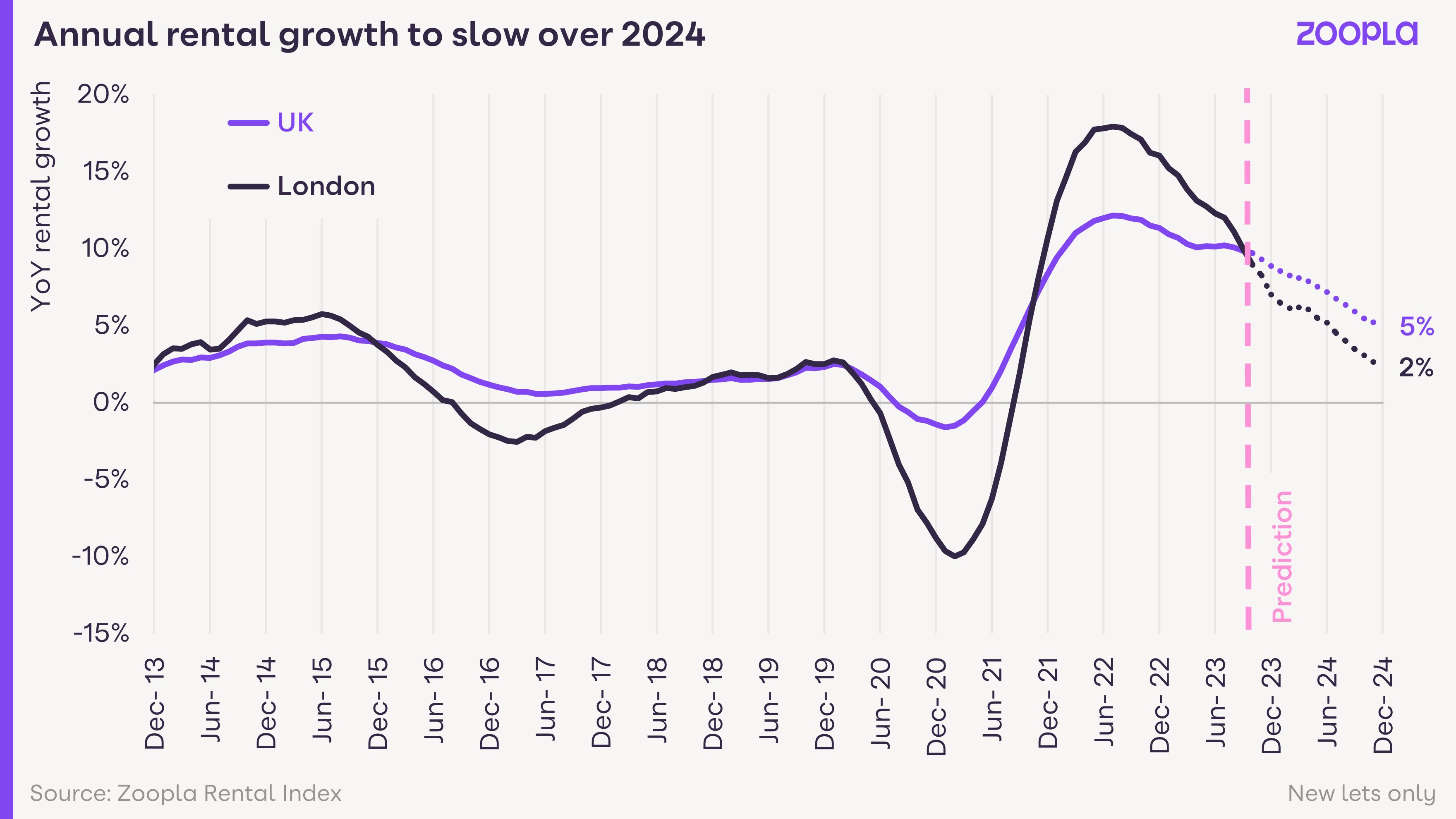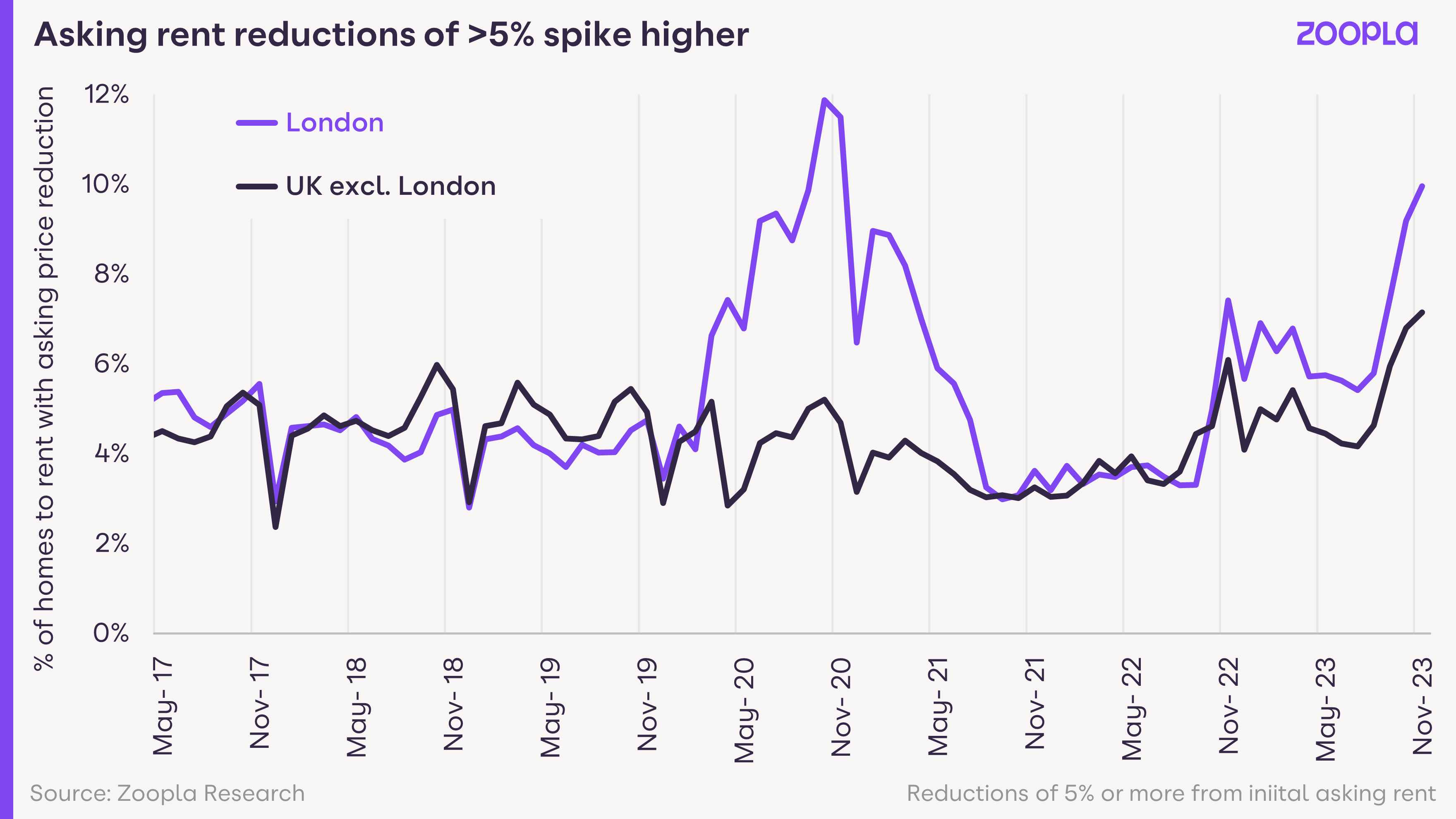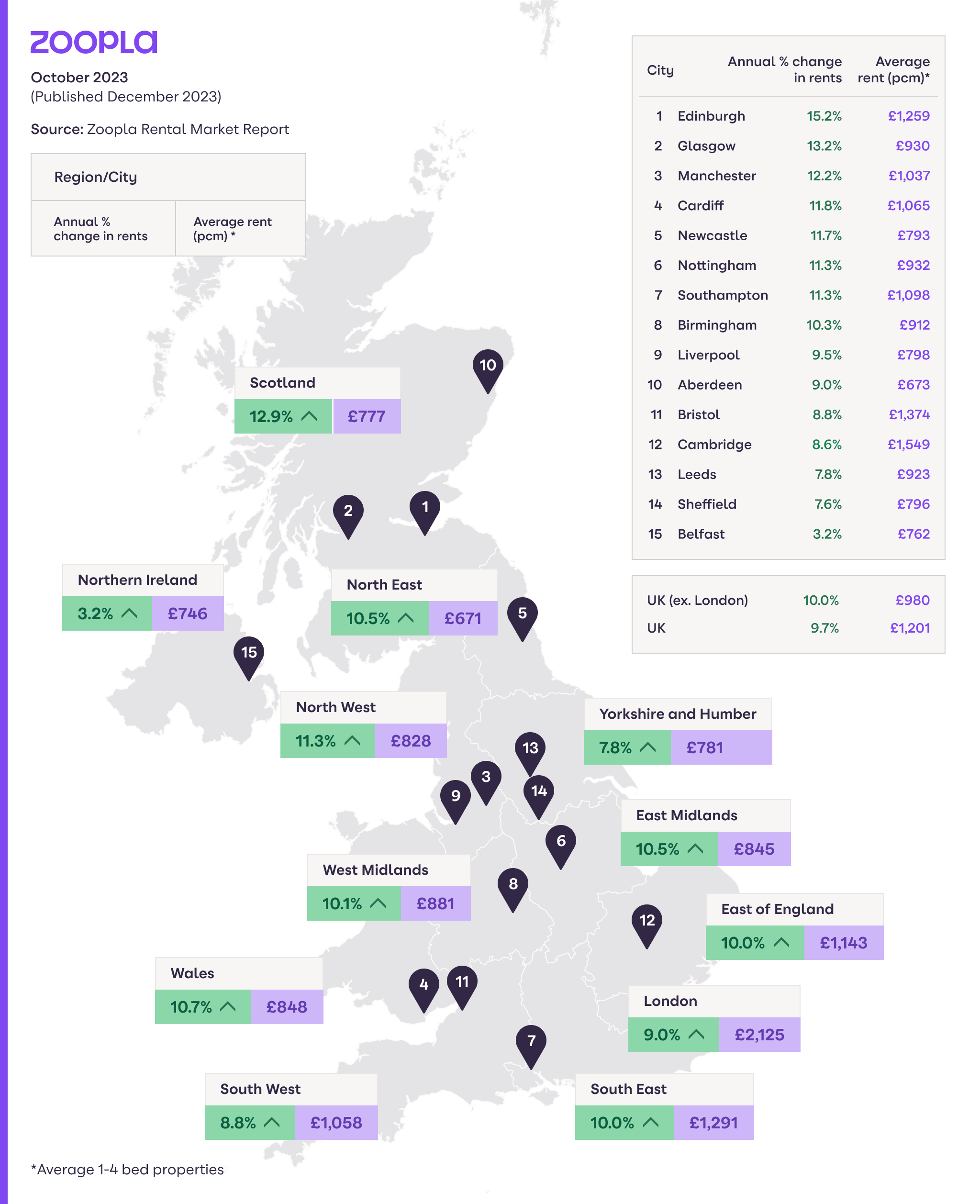Search
close
Stay in the loop with our monthly newsletter, bringing you a fresh take on all things property.
Form funnels into a Pardot list to update Prospect sign up for Estate Agent and New Homes
"*" indicates required fields
Annual rental inflation for new lets, UK
Year-on-year change in rental demand
UK rental inflation for new lets in 2024
The UK is past peak rental growth, which will be welcome news to renters. London will lead the slowdown, acting as a drag on the UK growth rate. There remains upside for rents to outperform in regional cities where affordability is less of a constraint on rental growth, but this won’t be the case indefinitely
A chronic mismatch between supply and demand has been the defining feature of the private rental market for the last 3 years. UK rents for new lets have risen by a third – or £3,360 a year on average – during this time.
Looking ahead, we are now past peak rental growth. We expect a major deceleration in rental growth over 2024 as demand moderates in the face of worsening affordability and supply improves slowly. There are already signs asking rents have overshot in some markets showing resistance to higher rents.
The slowdown in rental growth will be led by the London market – the most expensive market to rent a home and where affordability is weighing most on demand. London also accounts for 30% of rental supply which means trends in London have a disproportionate impact on growth rates recorded by our UK rental index.
We expect UK rental growth to slow to +5% by December 2024 from 9.7% now. We anticipate growth in London of just +2%, the lowest since 2021

UK rental growth slowed to 9.7% in October 2023, down from 11.9% a year ago but ahead of earnings growth (7.9%). On a regional basis, rental growth has slowed most rapidly in London, down from 17% a year ago to 9% currently.
This contrasts with the trends across other regional cities where rental growth is holding up largely due to better affordability than southern England.
Rental growth in Scotland continues to gain momentum with rents up 12.9%, compared to 11.4% a year ago. Rent controls in Scotland are resulting in landlords and agents pushing rents higher to allow for the fact that rental increases will be capped at 3% a year over the duration of the tenancy. It’s clear evidence of how rent controls can be counter-productive and distort markets.
A combination of factors have pushed rental demand well above average for the last 3 years. Firstly, the re-opening of the economy after pandemic restrictions were lifted from mid-2021 onwards, including a resumption of international travel.
This links to the second factor – the strength of the labour market with jobs growth boosting demand for rented homes.
Thirdly, higher mortgage rates have made access to home ownership more expensive. This has kept would-be buyers in rented homes and reduced available supply.
Finally, record levels of immigration into the UK, particularly high numbers of overseas students, has boosted demand.
There are signs that the combined impact of these factors is starting to plateau. Our data shows that rental demand has been steadily losing momentum over the second half of 2023.
This is illustrated by the number of enquiries per home for rent. This measure peaked at over 35 enquiries per property in the summer of 2022. There was a seasonal peak this summer, but to a lesser degree.
We are now in the usual seasonal slowdown that will extend into Q1 2024. The softening in demand reflects several factors:
It’s important to note that while UK rental demand is 11% lower year-on-year, it remains 32% above the 5-year average. Demand in London is down 20% year-on-year but remains above the 5-year average.
The supply-demand imbalance in rented housing is not going to disappear in 2024. However, the market is set to move more into balance than it has been over the last 3 years.
One important indicator of underlying demand, and the impetus for rental growth, is the extent to which asking rents for rental listings are being reduced to attract more applicants.
Asking rent reductions of over 5% at a national level are currently tracking in line with the second half of 2020 when the pandemic hit demand, supply expanded, anc rental growth slowed.
The volume of asking rent reductions of over 5% is currently the highest in London. 10% of rental listings in November 2023 were impacted. Meanwhile, the proportion across the rest of the UK has also jumped to 7%, the highest it has been for over 5 years.
This is evidence that the strong upward momentum in rents over the last 3 years is meeting some resistance as renters face growing affordability pressures and earnings growth starts to moderate.
These reductions are evenly spread across the market by rental price band with a concentration in the £1,000-£1,500 per month bracket.

The rental market is starting to cool, having run hot for the last 3 years. The slowdown in rental growth over 2024 will be kept in check by an ongoing scarcity of supply brought about by low new investment in the face of more regulation and higher mortgage rates.
London will lead the slowdown in rental growth on slower employment growth and affordability pressures – the average London renter household of 1.25 people spends 40.2% of earnings on rent compared to a UK average of 28.4%.
We expect rental growth to continue to run ahead of earnings growth in regional housing markets over 2024 with rents rising by 5-8%, largely due to underlying scarcity and headroom in rental affordability for rents to rise further.


UK house prices increase 1.6% as tariffs, stamp duty changes and broader economic uncertainty dampen buyer demand

House price inflation slows to 1.8% as the supply of homes for sale outpaces the growth in sales agreed

The housing market gets off to its strongest start in three years, with new sales agreed up 12 per cent on 2024.